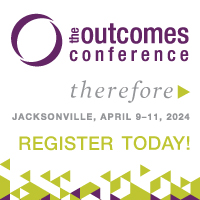
Mission Drift By Shawn Manley
 It’s Not Mission Drift
It’s Not Mission Drift
I’ve served many years in various nonprofit roles, from founder to pastor to board chair. In my decades of training and experience, there is one term that really rankles my feathers: Mission Drift.
Mission Drift is often affixed to faith-based organizations. Consultants, speakers and bloggers like to throw around this code word, “Mission Drift,” to encapsulate an organization’s challenges du jour. It elicits the kind of 20/20 hindsight head-nodding that makes people feel like they have uncovered obvious leadership errors (but, of course, it’s rarely the fault of anyone in the room where the code-word head-nodding takes place).
Each organization I’ve ever seen labeled with Mission Drift actually suffered from Motivation Drift. Motivation Drift happens when the purpose, and corresponding social mores, become lost over time. I have seen how this governance failure can lead to unholy alliances in which, commonly, money is exchanged and motivations are suppressed. When money rules over morals, God-inspired motivations are sidelined in pursuit of sustainability or growth.
I have witnessed movements birthed by the church where devoted believers become coopted by taxpayer funds under the auspices of expanding the work of the mission. A private donor’s demands could be equally damaging toward your motives. My litmus test: If the people who control the purse strings knew exactly why you do your work, would they continue to enthusiastically fund your ministry?
Here are three quick reasons why I propose we adjust our language.
Most mission statements are broad enough to include everything you’re currently doing.
If you are relying on the average of 14.5 words in a mission statement to keep programs on point, you had better include mind-reading as a job prerequisite for all staff and volunteers. People need mission statements for first-glance understanding of what you do, but they need purpose or motivation statements to know why you do it. Great leaders tell corporate stories which reinforce the mission, while rooted in the organization’s founding motivations.
Vision statements are often misunderstood.
I have gleaned from dozens of fantastic leaders, and in my experience, it is a very rare person who utilizes his or her vision statement as a regular part of the organization’s strategic plan. Vision statements frequently suffer from neglect, missional misalignment and a misunderstanding of where they fit within an organization’s planning process. How can you identify Mission Drift in an organization with a broad mission and an ambiguous or unaccountable vision?
Start with motive.
Motivation always trumps mission. If a mission is negotiable (as it should be, evaluated by the CEO/pastor and board), then motives should be clearly articulated and set in stone. Foundational motives are a non-negotiable. Scripture reinforces that God measures our heart’s purpose (Jeremiah 17:9-10, Proverbs 21:2, Psalm 51:10). Nothing will hamstring an organization faster than leaders who bleed for the mission but actively undermine the foundational motivations.
When your staff and employees believe the unambiguous intent of your founders and leaders, you will experience increase in trust and greater unity of purpose. Christian leaders, let’s follow the Lord by seeking His heart, and challenging our peers to do the same. Pray for the Lord’s motivations to be clear to you, and allow Him to superimpose His desires over our own.
####
Shawn Manley is a nonprofit specialist, passionately serving as COO for The Steward’s Journey. Shawn is the board chair for Nation’s Foundation and president emeritus for Helping Hand House. He is a church planter, licensed Foursquare pastor and FEMA certified disaster response chaplain. Shawn and his wife Cheryl live in Puyallup (pew-al-up) Washington, which translated from Coastal Salish means “The land of generous and welcoming people to all who enter our lands.”

Christian Leadership Alliance (CLA) equips and unites its members through shared learning experiences that include Christ-centered leadership development, high-impact networking, spiritual inspiration, and personal encouragement.
Discover the place where you belong and be counted among the thousands of Christian nonprofit organizations that represent CLA.
LEARN MORE!

What is Christian Leadership Alliance?
Christian Leadership Alliance equips and unites leaders to transform the world for Christ. We are the leaders of Christ-centered organizations who are dedicated to faithful stewardship for greater kingdom impact.
Sign up for FREE blog updates.
Upcoming Events
Check back later!



